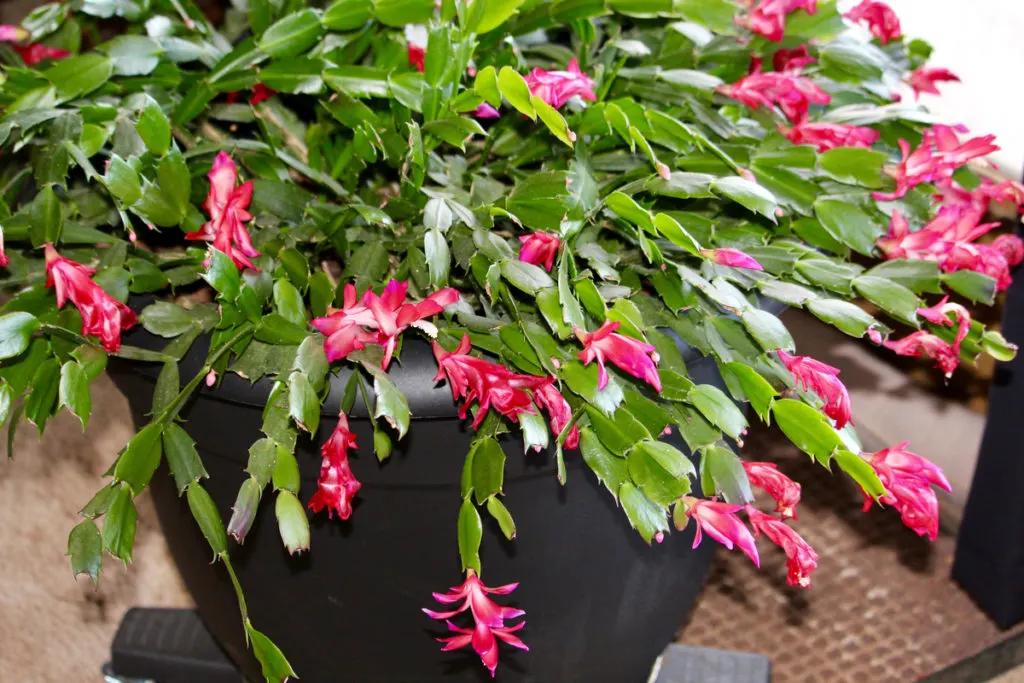
The Christmas cactus is quite a strange houseplant when you get right down to it.
It doesn’t look like a cactus, and supposedly it blooms around Christmas, but most people’s plants bloom in November, if at all.
The care and feeding of Christmas cactuses seems to baffle both new houseplant enthusiasts as well as folks who have had one in their home for decades.
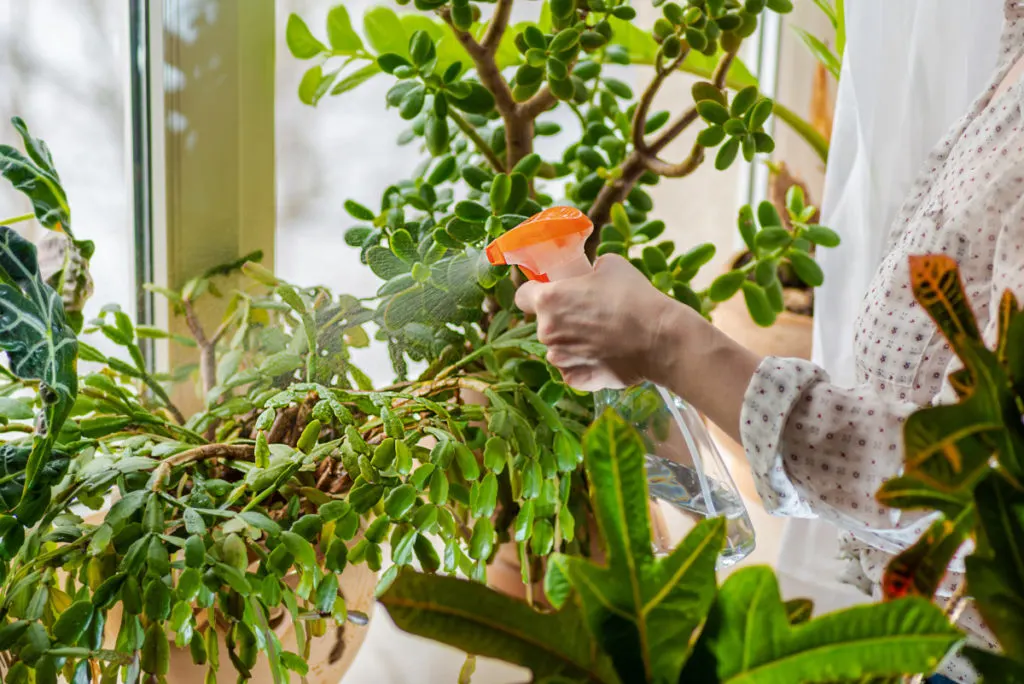
Whether you’ve got this whole thing figured out, or you need to plumb the depths of our in-depth Christmas cactus care guide, there are a few things that Christmas cactus owners should know.
So, let’s broaden your Christmas cactus knowledge with a few important points that will help you have a healthier plant for years to come.
1. It’s not really a cactus
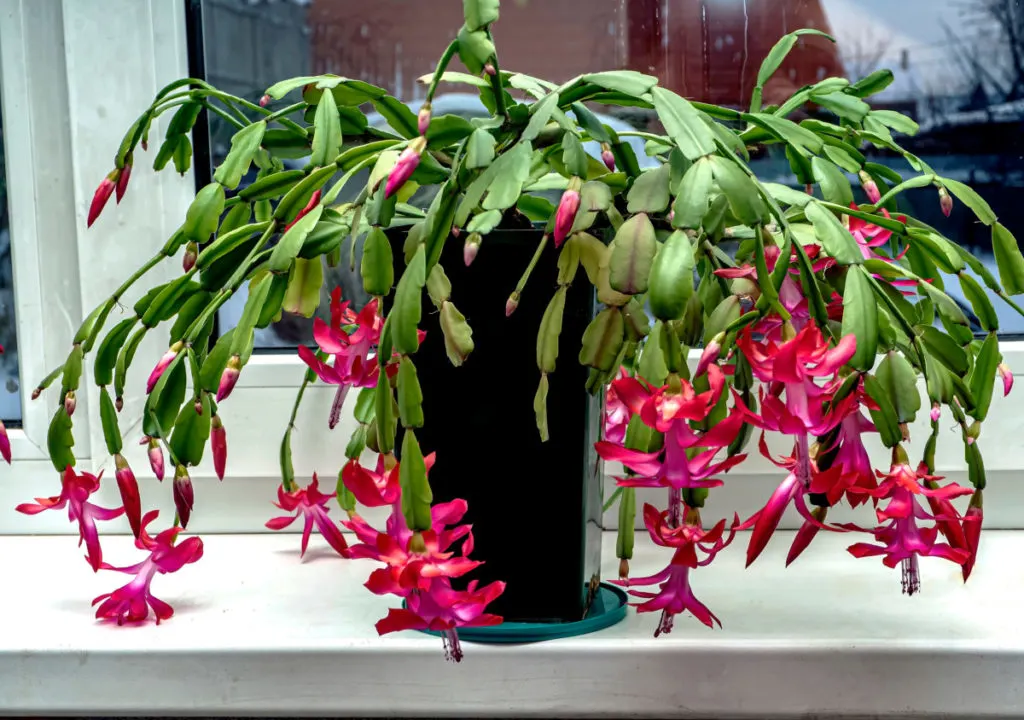
Despite its name, the Christmas cactus is not a cactus. While it is a succulent and does store moisture in its leaves, members of the Schlumbergera family are not considered a true cactus.
What does this mean?
Well, it means they aren’t as drought tolerant as a true cactus, so they need to be watered more often, and they can’t take the heat of the direct sun. Christmas cactuses are tropical plants rather than desert-dwelling plants.
2. It’s an epiphyte
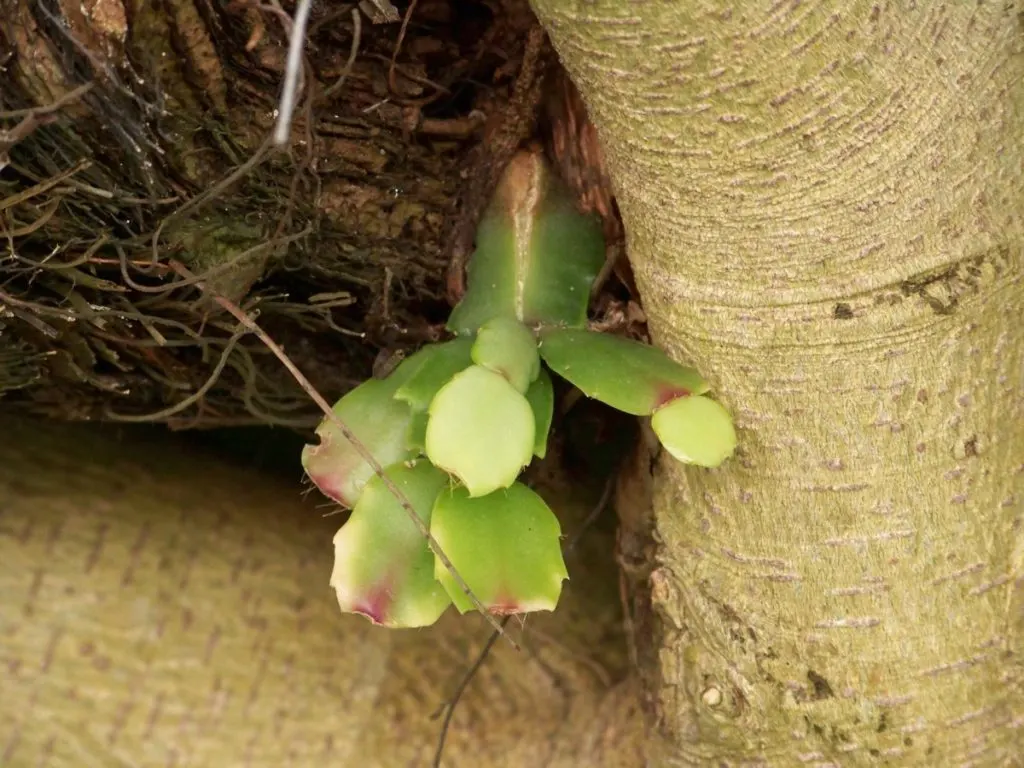
Christmas cacti are epiphytes. An epiphyte is a plant that grows on the surface of another plant.
Not to be mistaken for a parasite, epiphytes do not feed off of or harm the plant they grow from. Rather, the epiphytic plant takes in water and nutrients through its leaves and shallow root system via the air, rain, and organic matter that collects on its host plant.
An epiphyte’s root system is less dense than plants that grow in the soil, and the roots are mainly used for clinging to the plant it’s growing on.
This is an important consideration when choosing soil for your Christmas cactus. You want loose, sandy soil that drains quickly, so the roots don’t become compacted or soggy.
3. Your Christmas cactus most likely isn’t a Christmas cactus
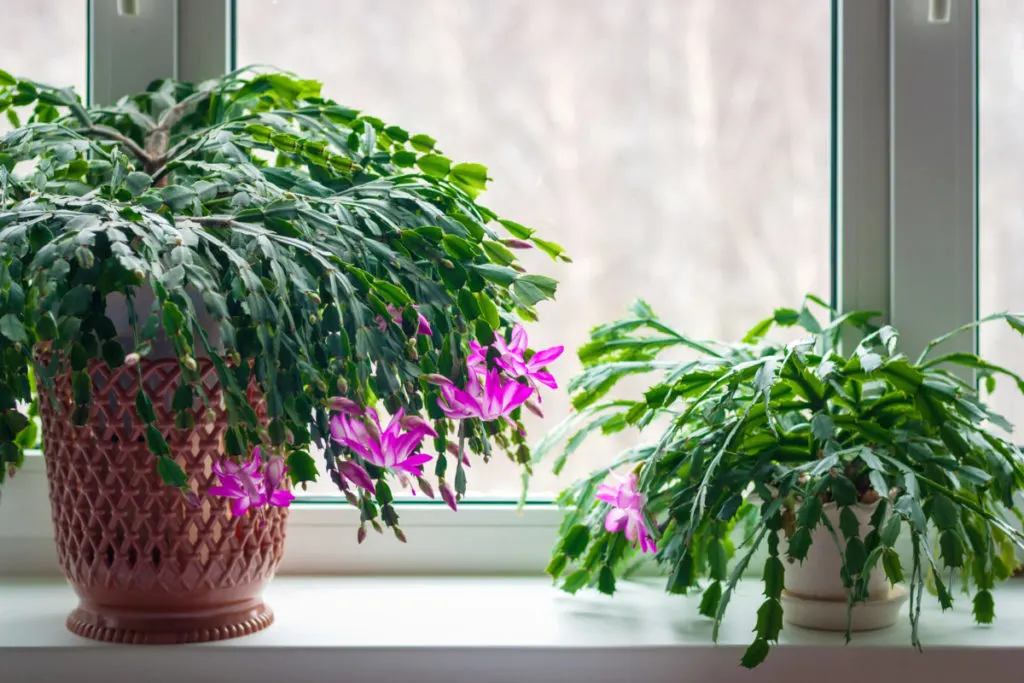
One of the biggest complaints about Christmas cactuses is that they never bloom at Christmas.
That’s most likely because you have a Thanksgiving cactus.
True Christmas cactuses were a hybrid created in England over 150 years ago, and despite their popularity, you will rarely, if ever, see them for sale in a store. These are the plants that have been handed down from generation to generation.
So why are Thanksgiving cactuses sold as Christmas cactuses?
Because no one wants to buy a Christmas cactus without any buds on it, it’s much easier for commercial growers to produce Thanksgiving cactus, or Schlumbergera truncata, which will be covered in buds and ready to bloom when they hit the shelves for the holidays in November.
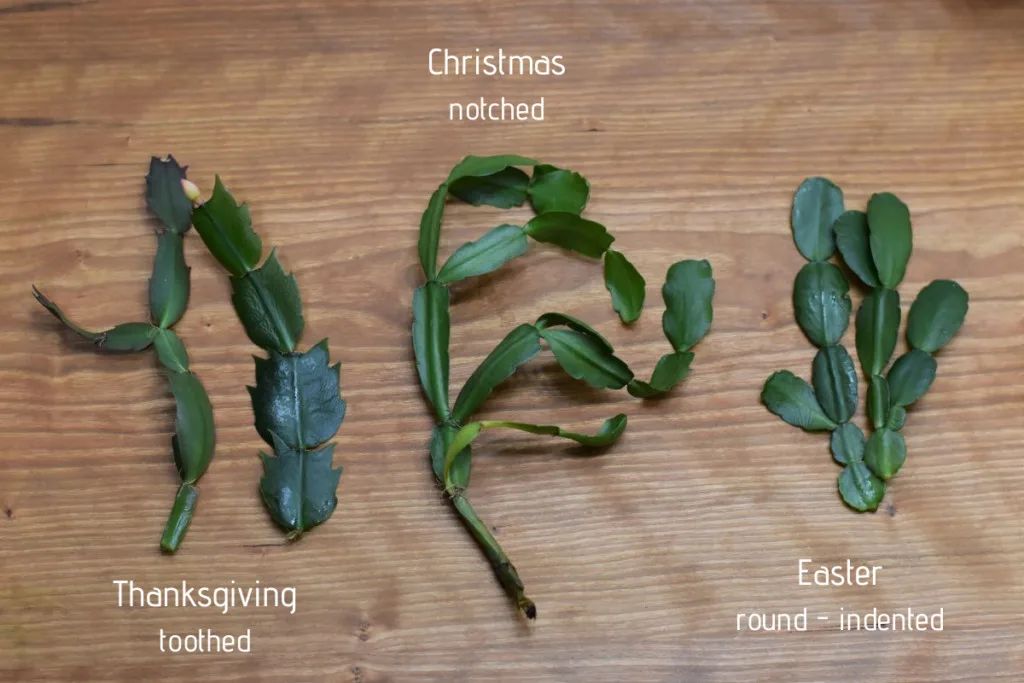
You can easily tell the difference between the two by looking at one of their segments. Thanksgiving cactuses have toothed points at the top of each segment, whereas Christmas cactus or Schlumbergera buckleyi have more elongated segments with scalloped edges and no points.
4. You may not need to repot your cactus
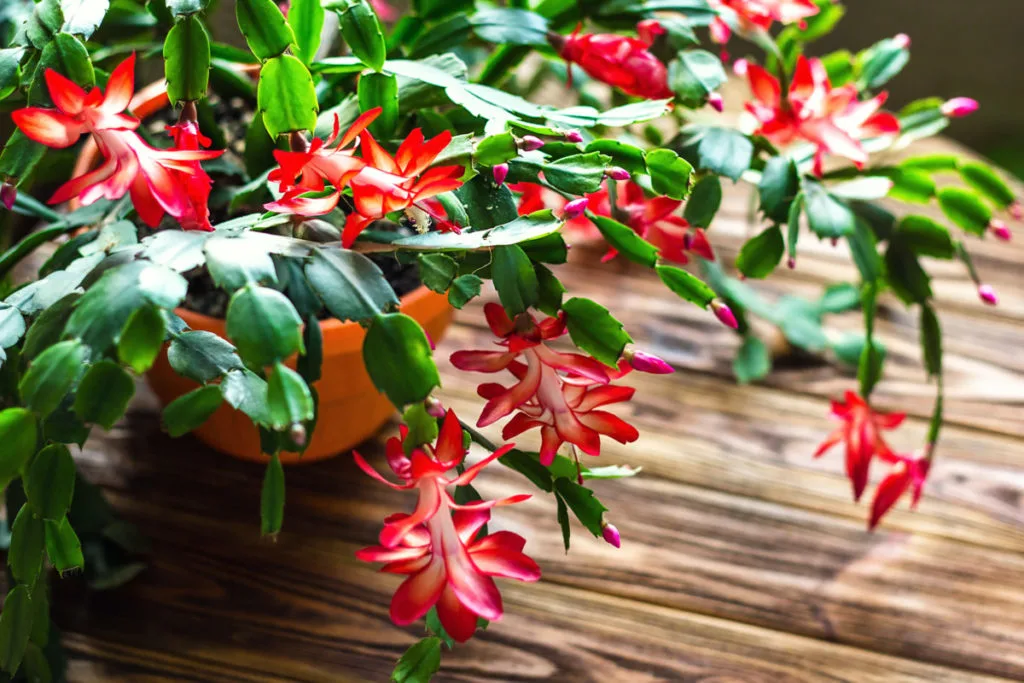
While most plants will need to be repotted once every year or two, Schlumbergera actually does better when they’re a bit root-bound. In fact, repotting them too often can cause damage, as the segments can snap off, and the plants are easily stressed by a lot of movement.
As long as your plant is still putting out new growth and blooming each year, it’s best to leave them in the pot they are in.
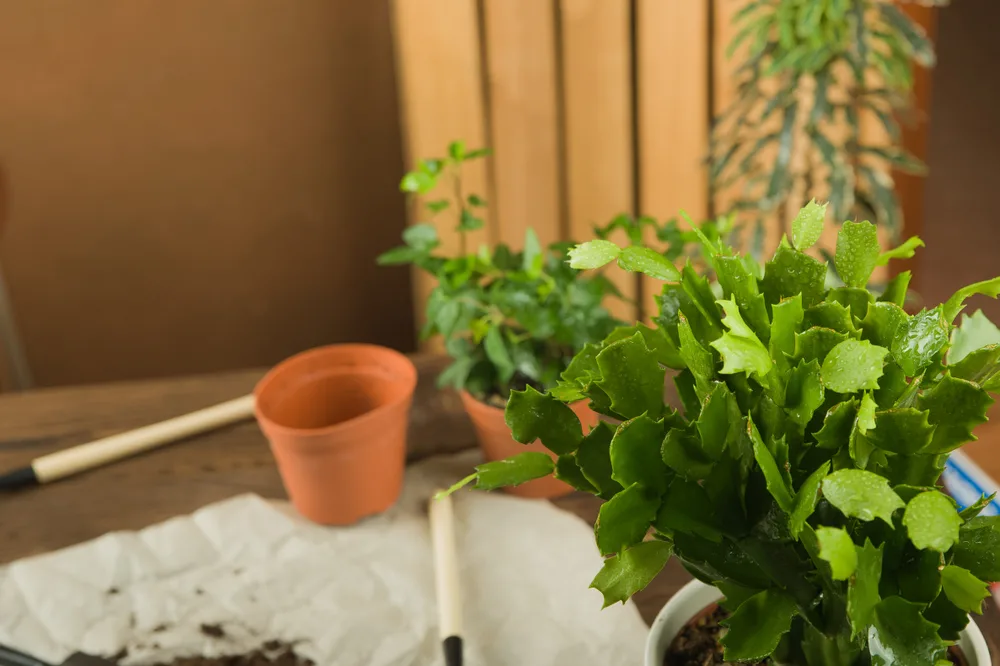
You can top dress them by adding a little fresh soil to the top of the plant each year. This will replace potting soil lost out of the drainage hole over time.
5. A Christmas cactus must go dormant to flower
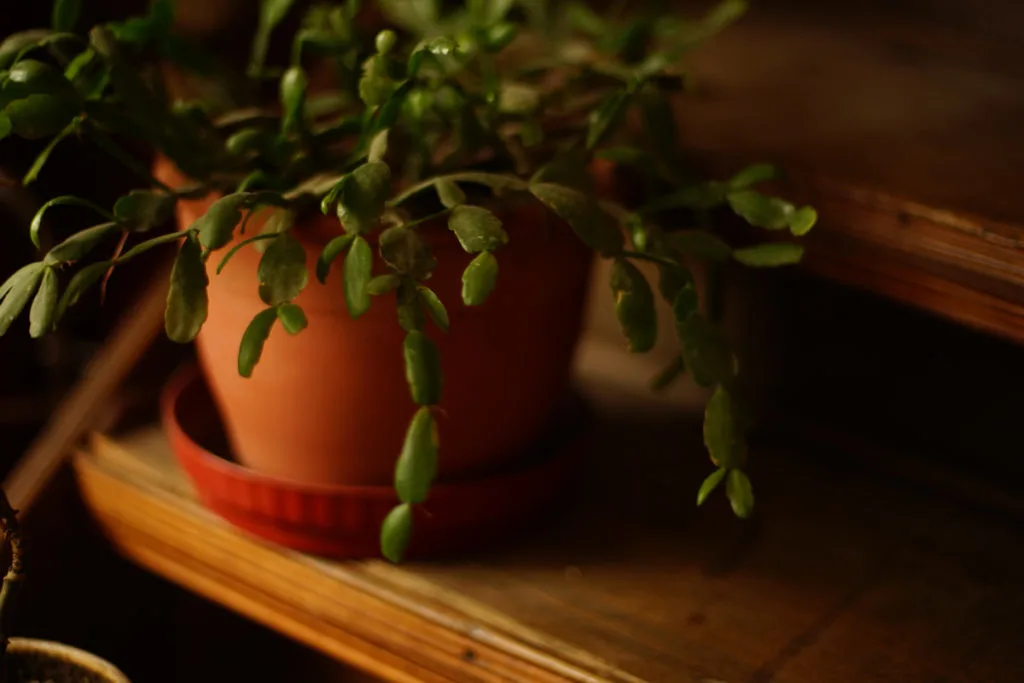
If you want your plant to flower, you have to mimic the environmental triggers that cause it to enter a period of dormancy.
In their natural habitat in South America, Schlumbergera goes dormant as the nights grow longer and cooler. This allows the plant to enter its blooming cycle and set buds.
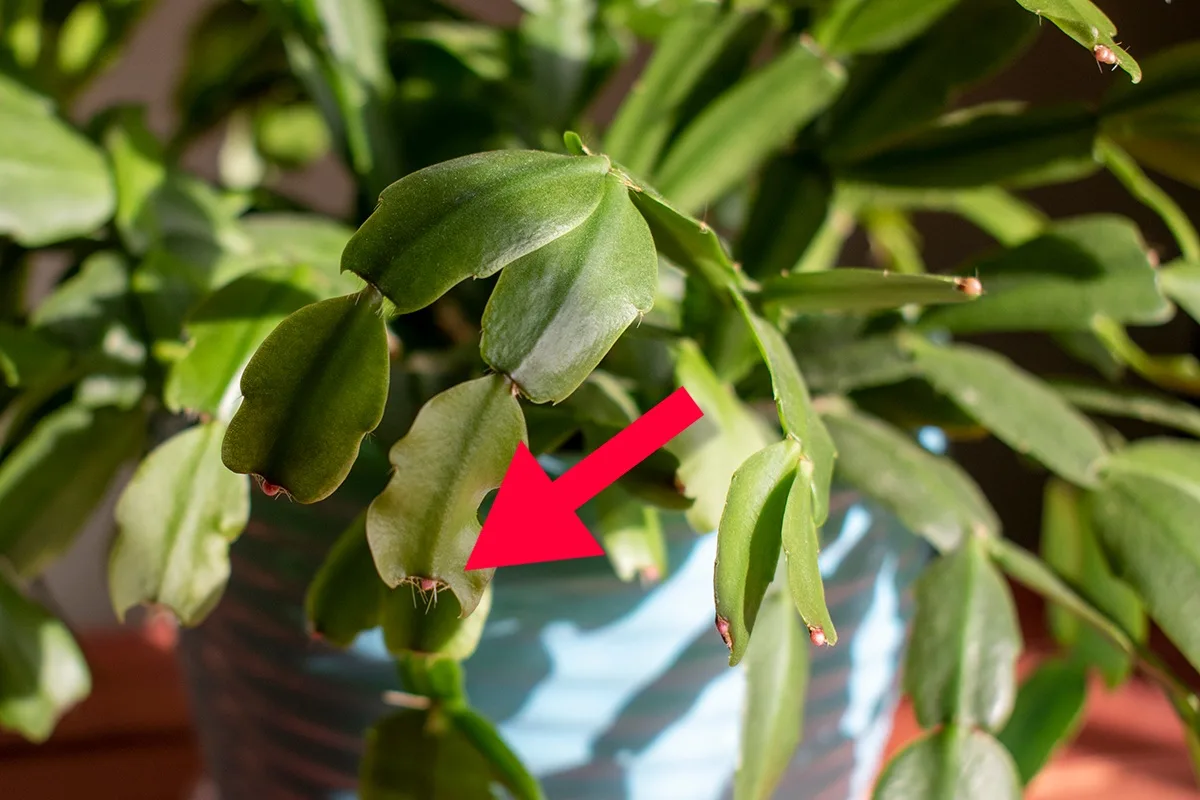
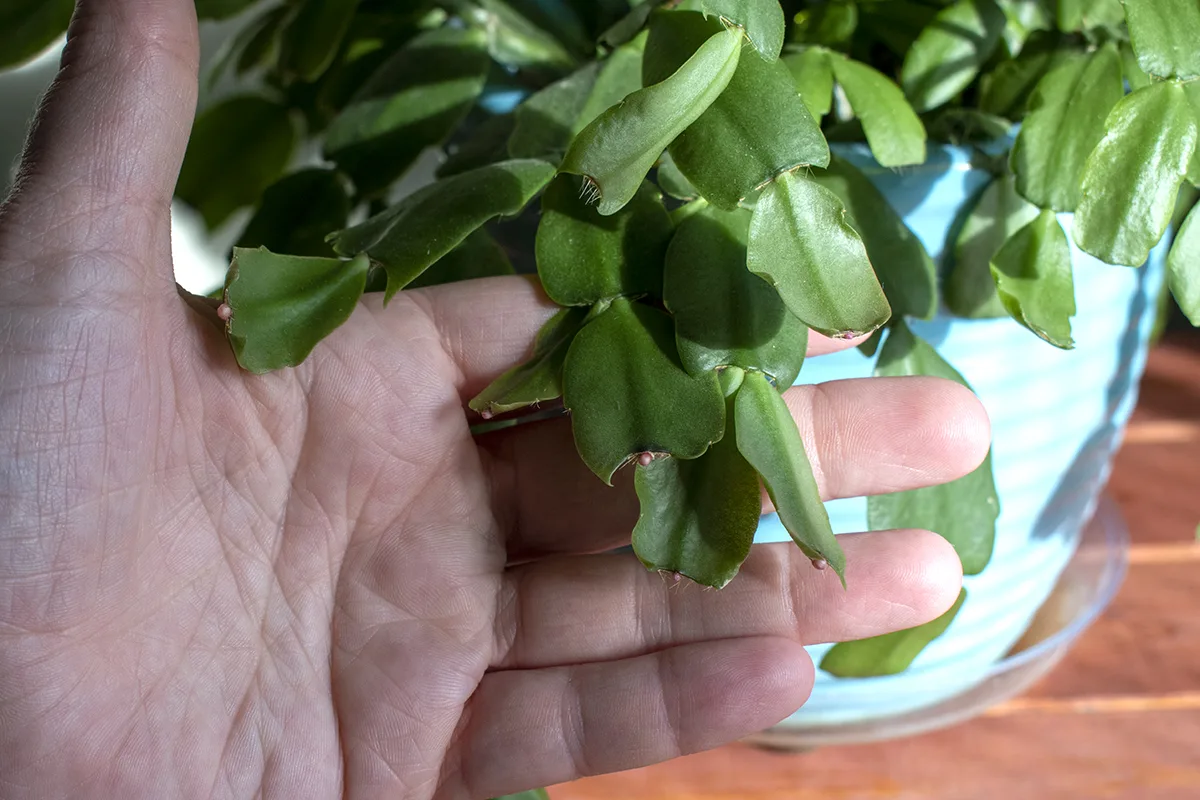
If your cactus doesn’t experience these cool, 14-hour nights, it will never go into dormancy. This is the number one cause of a Christmas cactus that never blooms, and it’s a surprisingly easy issue to fix.
A non-flowering Christmas cactus is one of the most common complaints when it comes to caring for a holiday cactus. Here’s how to deal with a non-flowering Christmas cactus and how to fix twelve more common problems.
6. You can multiply your Christmas cactus plants for free
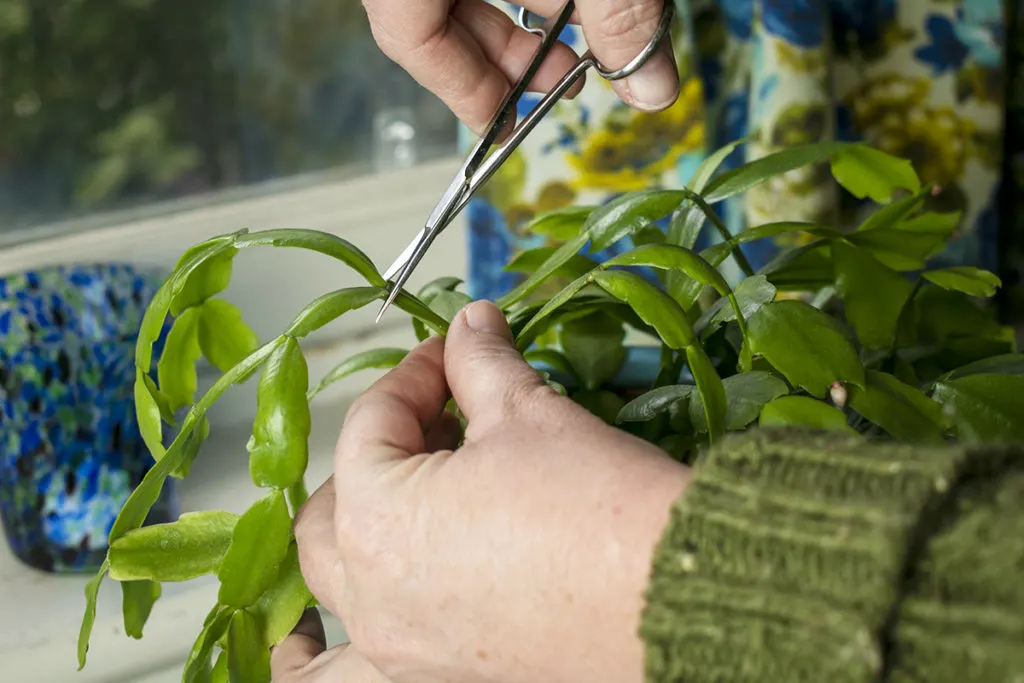
Propagating Christmas cacti is simple to do, and it’s a great way to add to your collection, grow gifts for friends and family, or even fill in skimpy plants for free.
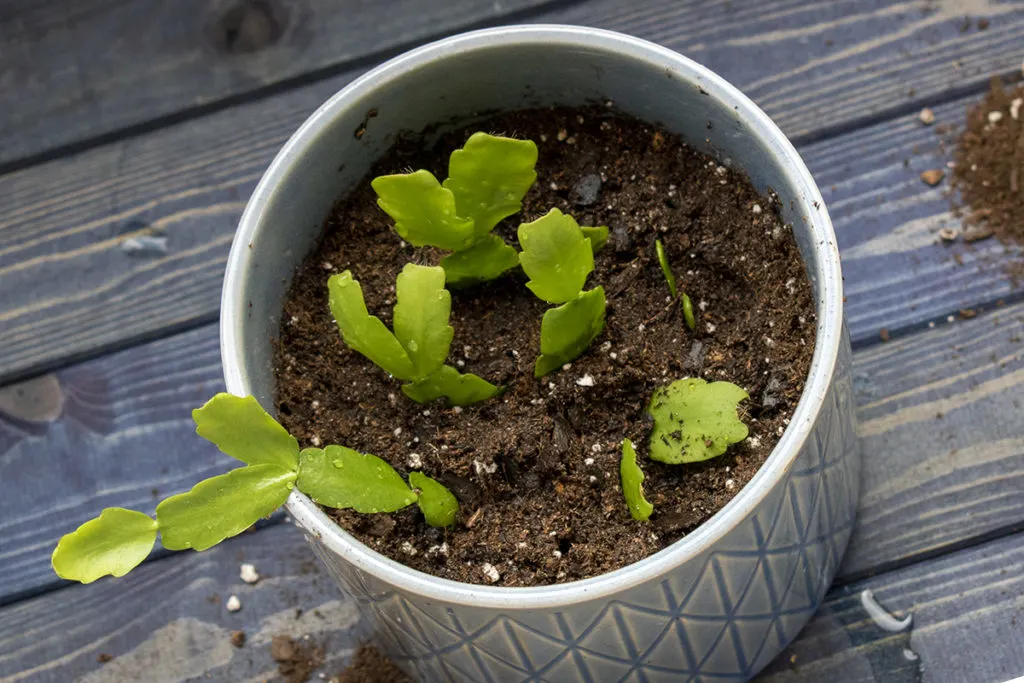
We’ve got a quick and easy Christmas cactus propagation guide to walk you through the process.
How to Propagate Christmas Cactus + 2 Secrets To Big, Blooming Plants
If you have several Thanksgiving plants of different colors, you can even create a multi-colored cactus by propagating cuttings from each of your plants into one pot.
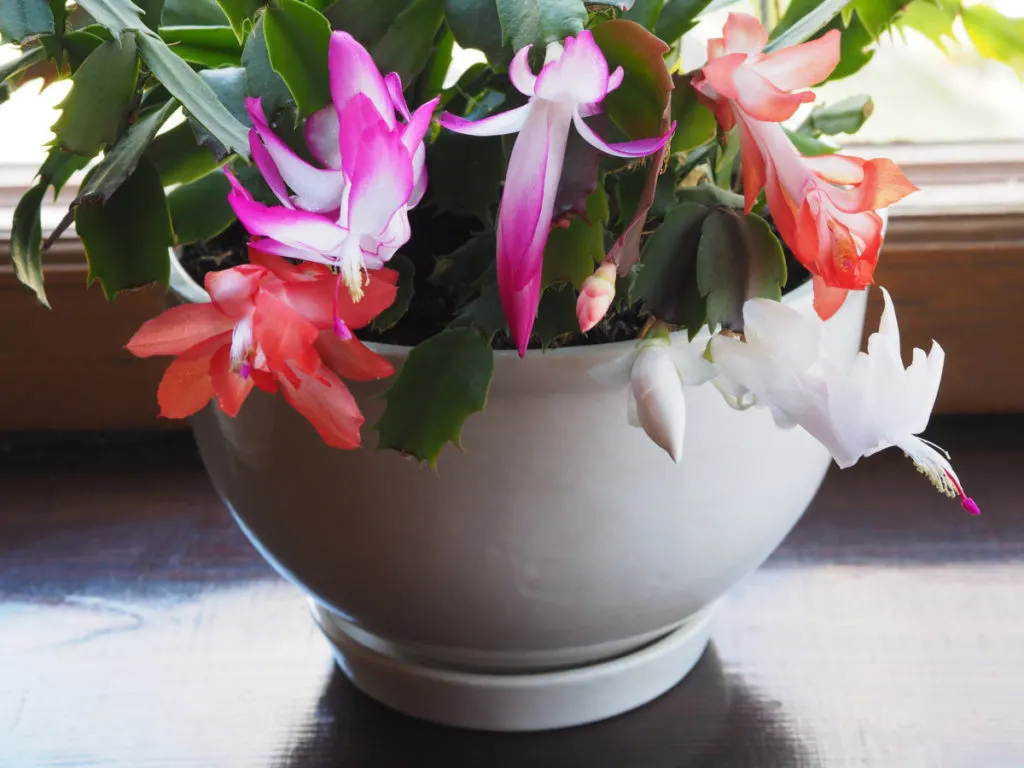
7. You can put your Christmas cactus outside
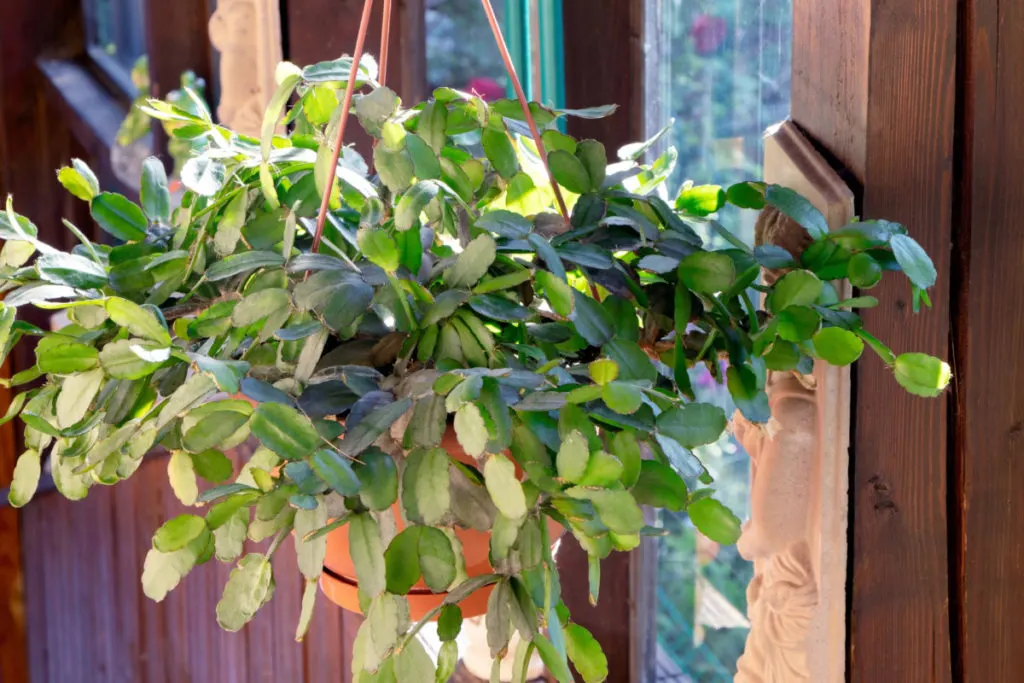
Our attention often turns to these plants during the holidays, but when the weather outside warms up, you can move them outdoors.
Of course, you’ll need to find a spot that doesn’t receive direct sun, so your plant doesn’t burn. Wait until days are a steady 65 degrees F or higher, and nighttime temperatures don’t fall below 50 degrees F.
When moving a holiday cactus outside, be sure to keep an eye on it for the first few days to watch for signs of stress.
As the summer comes to an end, make sure you bring your plant inside well before the nights cool off. Once your plant has reacclimated to being indoors, you can begin the dormant cycle so it will set buds for the holidays.
8. Christmas cactuses have sensitive skin
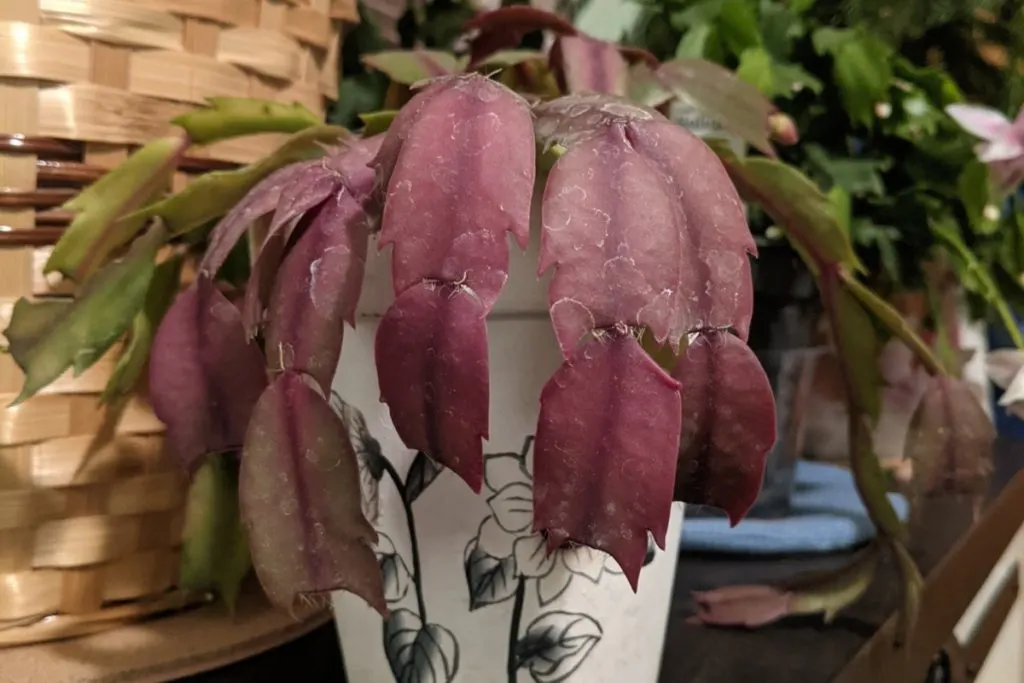
Did you know your Christmas cactus can get a sunburn just like you? These plants are native to Brazil, where they grow in the branches of trees shaded by the canopy above. They grow in bright light that filters through the leaves above them.
If you place your Christmas cactus in direct light, the segments will turn red or even purple. This can stress the plant, making it harder for it to bloom. If you don’t catch it in time, you may even kill the plant.
If you notice your plant is sunburned, move it away from the bright light to a darker area of your home, and it should recover after a few weeks. Once the plant has recovered, you can move it back to a location that receives bright indirect light.
9. Christmas cactuses are pet friendly
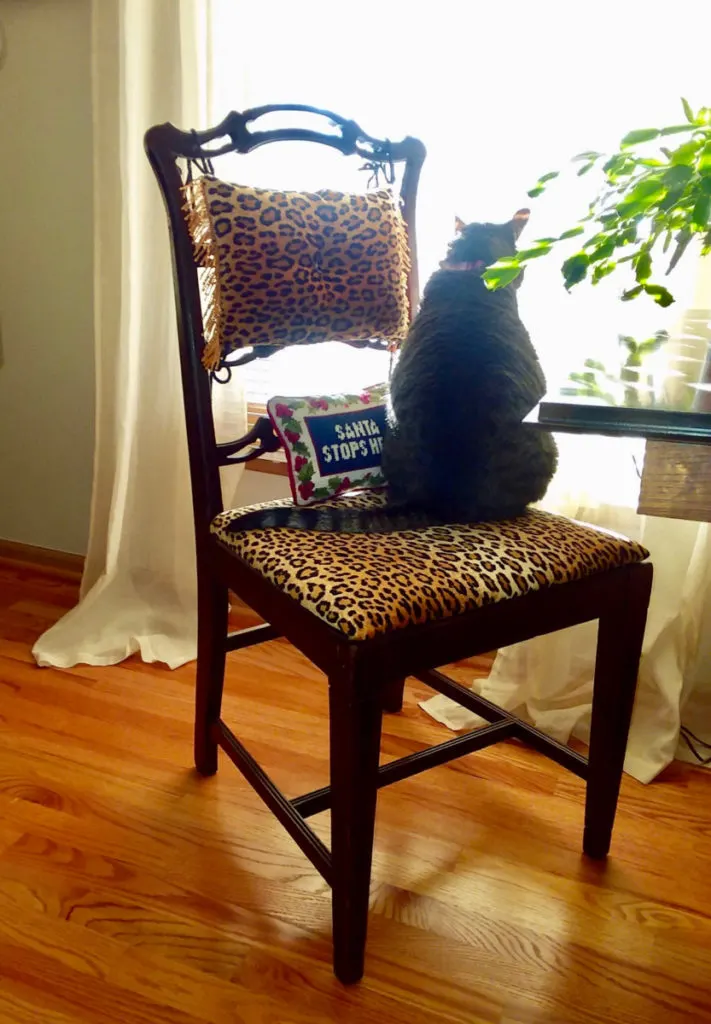
Unlike many popular plants, Christmas cactuses are nontoxic to dogs and cats. When it comes to holiday plants, the list of nontoxic plants is incredibly short.
If you choose a plant as a Christmas gift for a pet owner, a Thanksgiving or Christmas cactus makes a great choice.
If you’re a pet owner, you might want to see what common holiday plants pose a threat to your companion.
Poinsettias & Other Holiday Plants That Are Toxic To Pets (& 3 That Aren’t)
10. Christmas cactuses can outlive you
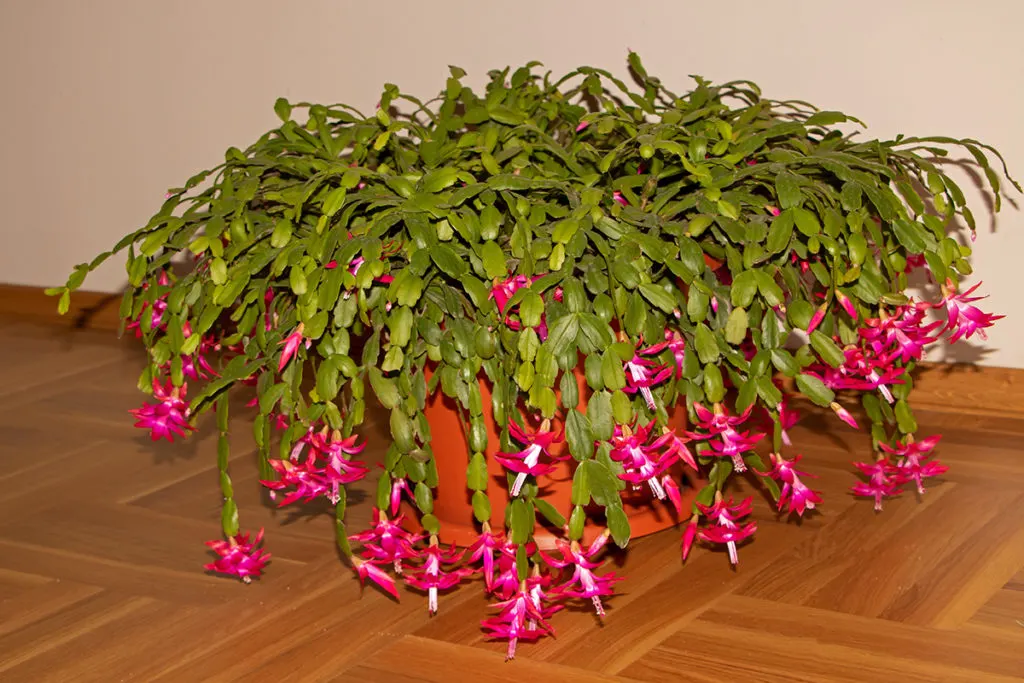
Another reason it seems everyone has a holiday cactus is because of how long they live. If properly cared for, it’s not uncommon for these plants to live for decades. The internet is littered with local news stories of massive Christmas cactuses a hundred years old or older.
These giant plants often pass from generation to generation becoming a living heirloom.
You can expect your plant to live for at least 30 years on average. With exceptional care, perhaps your family will have a plant in the local newspaper someday.
To dig even deeper into these interesting plants, you’ll want to read:
13 Common Christmas Cactus Problems & How to Fix Them

Get the famous Rural Sprout newsletter delivered to your inbox.
Including Sunday musings from our editor, Tracey, as well as “What’s Up Wednesday” our roundup of what’s in season and new article updates and alerts.


